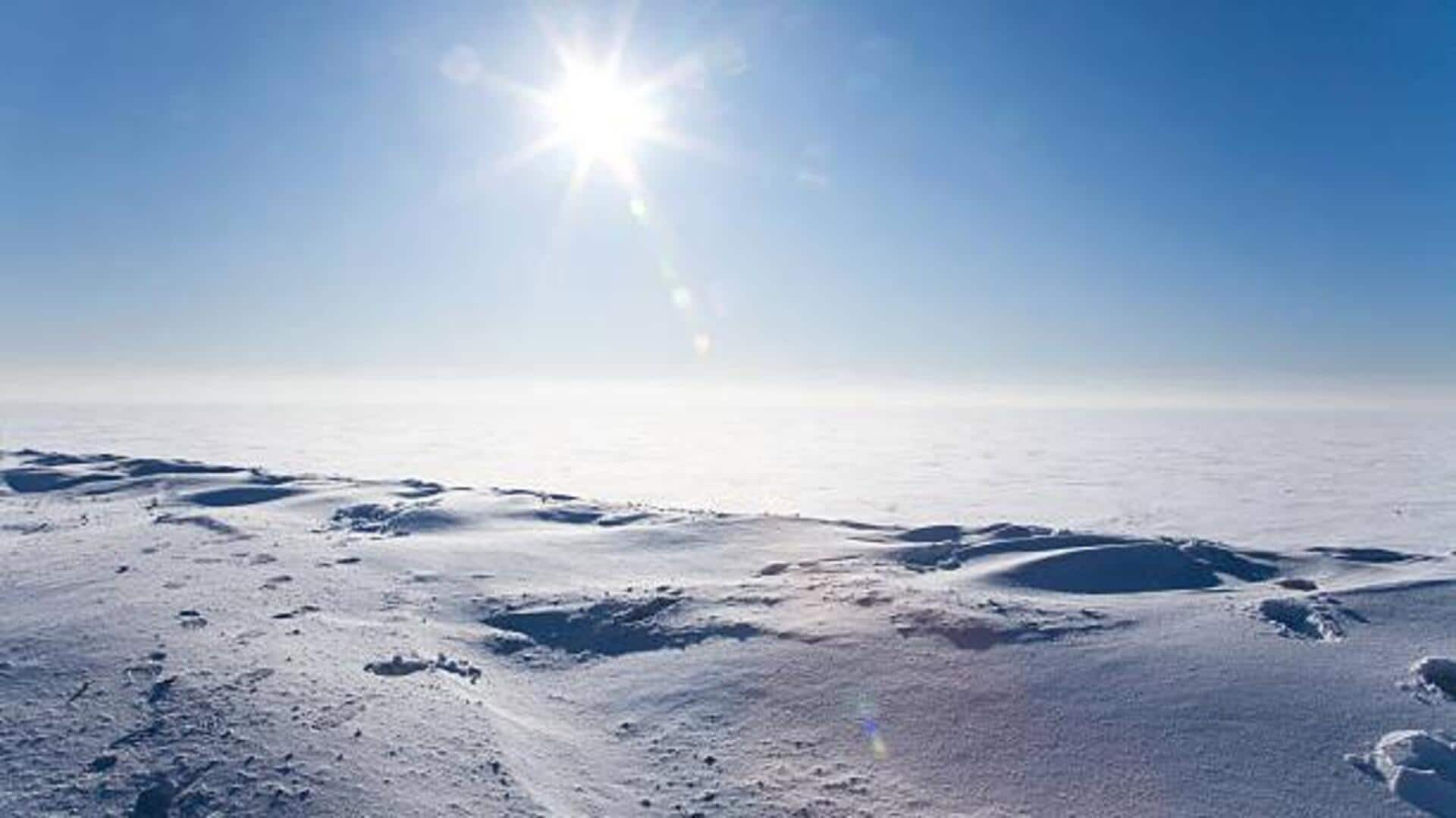
Antarctic sun mirages: An experience you can't miss
What's the story
Antarctica, the colossal kingdom of ice, is also home to the ethereal ballet of sun mirages, a phenomenon where sunlight refracts through layers of cold air, painting the Antarctic canvas with surreal light displays.
This article delves into the science behind these elusive apparitions, the best times to spot them, ideal vantage points, and expert advice for travelers hoping to capture this once-in-a-lifetime spectacle.
Science behind
Understanding sun mirages
Sun mirages in Antarctica occur due to temperature inversions, where warmer air sits above cooler air near the surface.
This causes light rays to bend as they pass through different air densities, resulting in mirages.
The superior mirage, typical in Antarctica, raises objects such as the sun above their actual positions, creating phenomena like elongated sunsets or multiple sun images.
Timing
Best time to witness
The ideal time to observe sun mirages in Antarctica is during the austral summer months from November to February.
Why? Well, during this time, some areas near the Antarctic Circle experience up to 24 hours of daylight, which means you have a whole day to witness these light shows.
Plus, clearer skies and longer daylight hours make it more likely that you'll catch a glimpse of a sun mirage.
Spots
Ideal locations for viewing
Some parts of Antarctica are more ideal for witnessing sun mirages, thanks to their unique landscapes and weather conditions.
The coasts near research stations such as McMurdo Station or Casey Station are favored by visitors for their relatively easy access and higher chances of clear skies.
Plus, navigating through icebergs on an expedition cruise can offer unanticipated glimpses of sun mirages set against a spectacular backdrop.
Photography
Photography tips for capturing sun mirages
Photographing a sun mirage in Antarctica can be a challenge due to its fleeting and unpredictable nature.
Manual camera settings allow you to adjust exposure and focus for the intense Antarctic light.
A tripod will help steady your shots in the strong winds, and polarizing filters will improve colors and reduce glare from the snow, making your photos truly spectacular.
Gear up
Preparing for your Antarctic adventure
Traveling to Antarctica requires meticulous preparation, particularly if you're hoping to experience unique natural phenomena like sun mirages.
Key items to pack include layered clothing designed for extreme cold weather conditions, and crucially, UV protection sunglasses or goggles.
Extended periods under the harsh polar sunlight can be damaging to your eyes without adequate protection.
Plus, a good camera to capture those magical moments against the backdrop of Antarctica's ethereal landscapes.